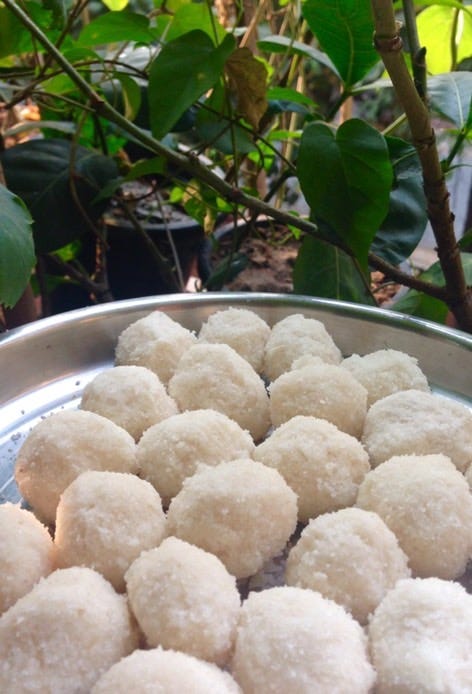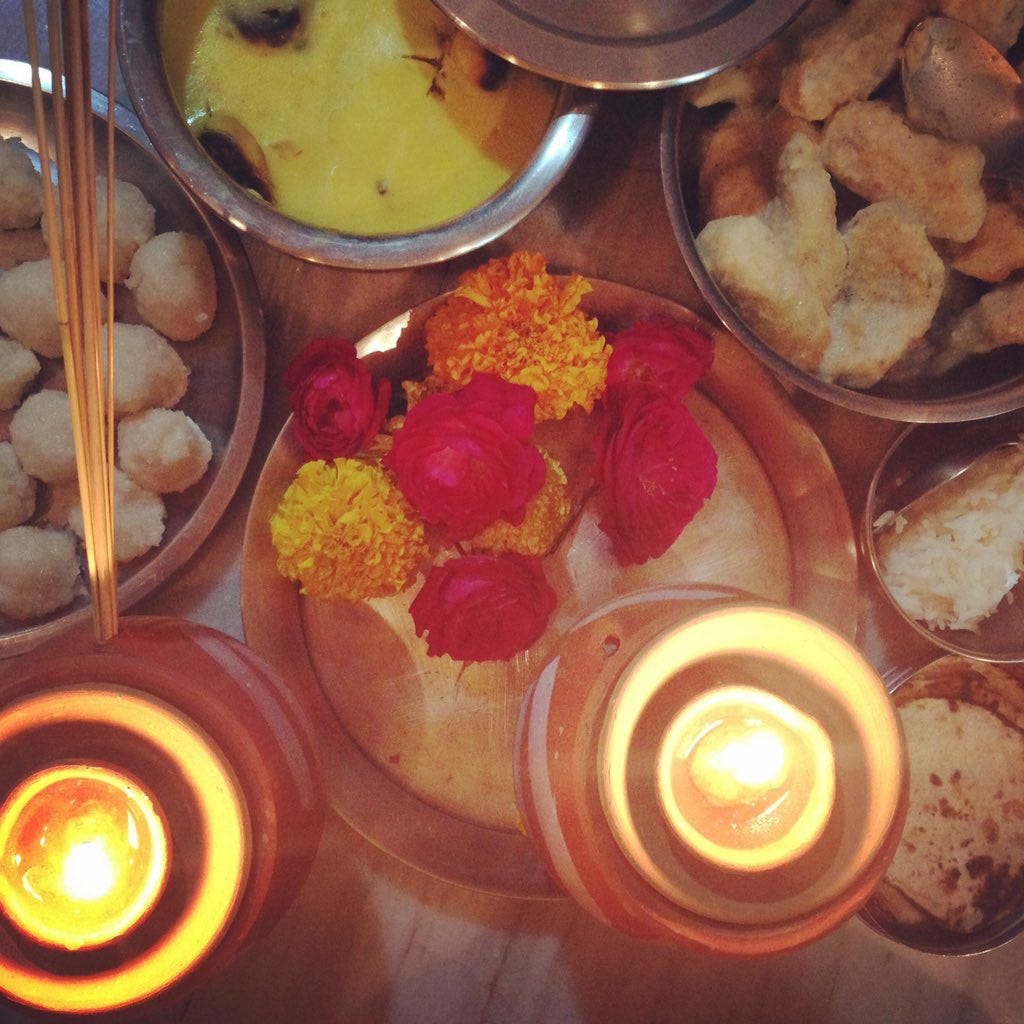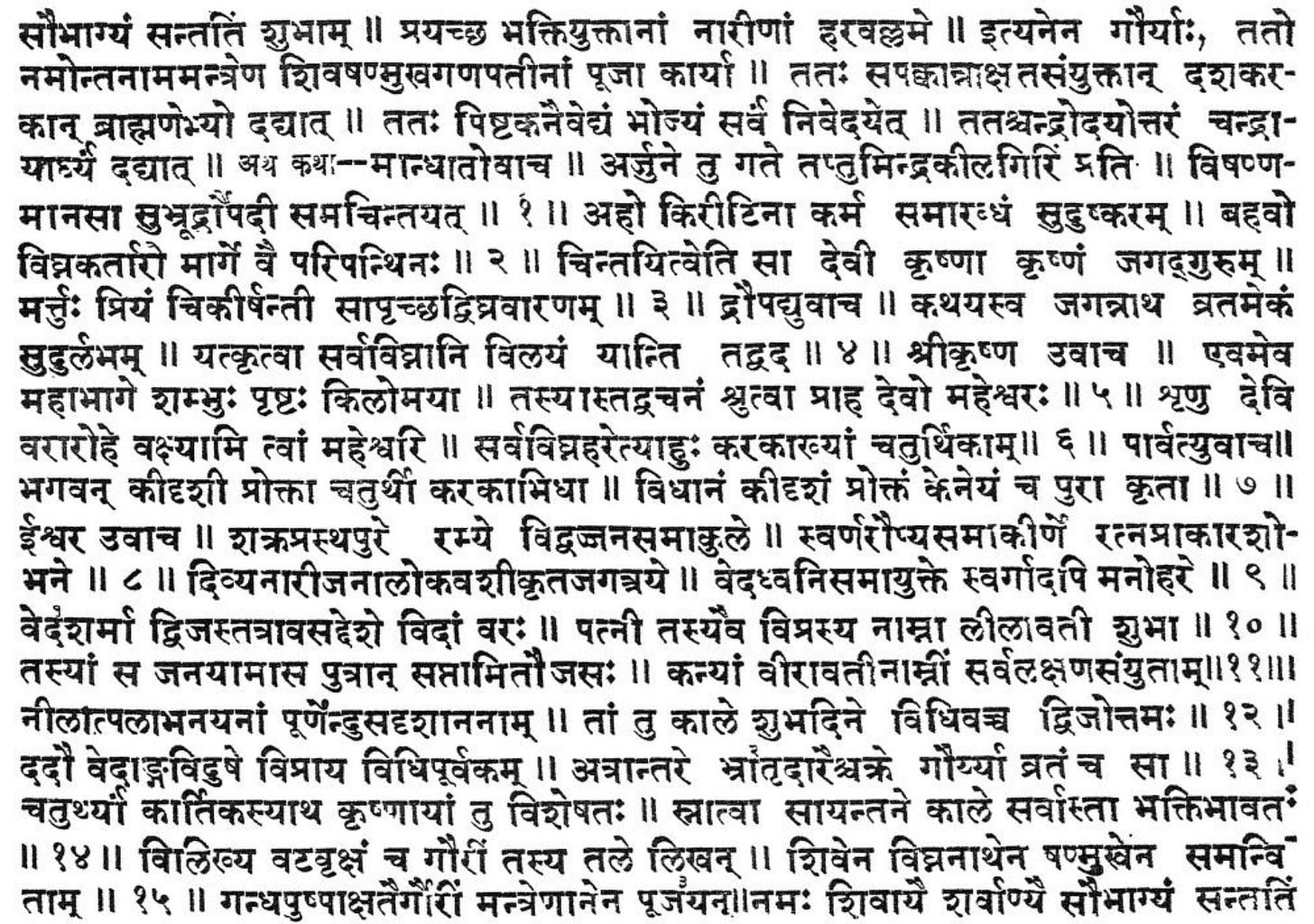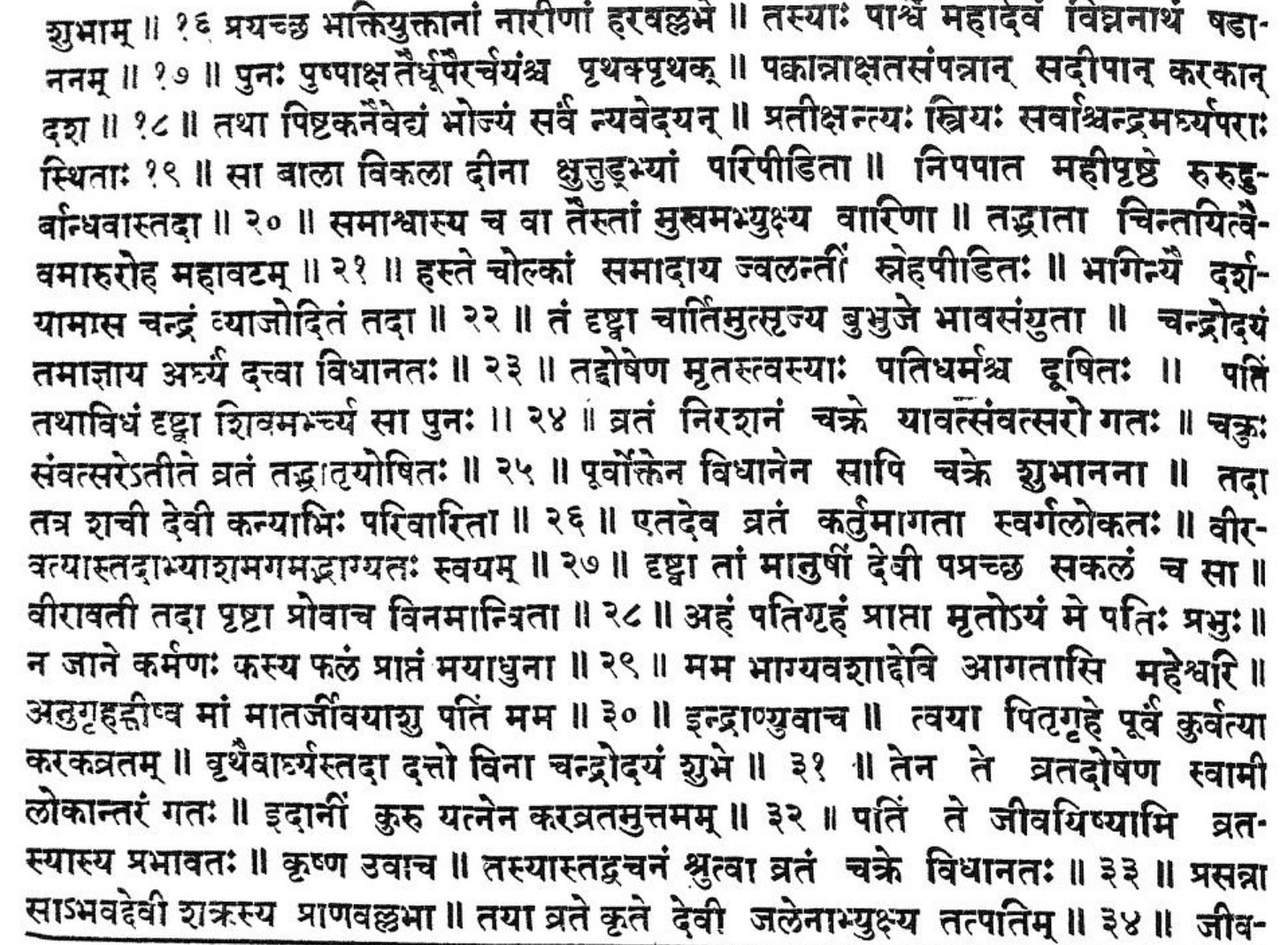The earthen pots with a spout known as Karvas or Karakas
The jingling of the anklets, the tinkling of the bangles rung through the early winter air as Nandini ran down the steps to her mother’s in law room on the ground floor of their ancestral mansion. She had just got off the phone with her mother who was eager to know what all she’d planned for her first karva chauth. It was only then did it dawn upon her that amidst all the commotion around settling in her new home she’d completely forgotten about a tradition she’d so adored since childhood. She had watched her mother prepare for the festival as a toddler, not fully comprehending the arrangements being made, the rush of the maids to and fro picking up things, calling out for others, but as she grew up, she found the significance of the festival stirring her romantic soul and appealing to her sense of culture. She enjoyed helping her mother ready the house for the festival, and passionately looked forward to the day she’d observe the ritual for her sweetheart, once married.
So it was an anxious moment for her to realise she’d all but forgotten about it, busy as she’d been with so many things happening around her. Entering the room, she paused at the mahogany sofa, intricately carved with roses and vines, with a pale pink upholstery suffusing it in a warm glow as the afternoon sun drew shifting patterns of the amla tree whose shadow swayed on its cushions, to catch her breath.
“Maa, tomorrow is Karva Chauth”
Her mother in law Jiya looked up from her knitting and smiled
“Yes, Nandini, so it is, do you have something on your mind regarding it?”
“I just wanted to how the festival is observed in this house, and if it’s any different from how it happened at our place”
Jiya thought for a moment before starting to narrate the customs which were followed in her marital home.
Hindu folk art depicting the festival of Karva Chauth
After she’d finished she asked Nandini about how the festival was observed in her parents home, something which Nandini was only too eager to share. The ladies of the house concluded that there weren’t any differences in their ways of celebration with Jiya happily noting how her daughter in law was excited to plan and organise her first karva chauth in her new home. She couldn’t be happier at letting her do it all, she herself had been a hands on person, and had enjoyed taking on the mantle of responsibility from her mother in law during her days. Isn’t it how traditions are best carried forward when the older generation is still alert enough to guide the young while the young are enthusiastic as well as in keen possession of the sense of responsible to shoulder the weight of the culture they’re born into, she pondered.
The rice flour sweets
The month of Kartik is one of the auspicious months of the Hindu lunar calendar. It is a time for one of the biggest festivals of the Hindus known as Deepawali which falls on the Amavasya of Kartik. The month of Kartik begins with the pratipada of Krishna paksha, the waning phase of the moon, the fourth day of which is celebrated as the Karva Chauth, also known as Karaka Chaturthi. The tradition of celebrating Karaka Chaturthi has been a part of the Hindu belief system since the ancient times. The different regions of India which observe this tradition have their varied folk customs and legends which form a part of the cultural heritage associated with this festival.
The Karva Chauth vrat draws various cultural elements in a veritable coalescence of the all pervasive sacredness associated with the month of Kartik as stated in our Puranas. Although popularly it is recognised as a celebration of the conjugal bond between a husband and a wife, the tradition extends to seeking the well being of the family, beautifully epitomised in the ritual where the custodian of a home, the woman, becomes the subliminal link between the earthly and the divine.
In this article we’d be taking a look into the ritual of Karva Chauth as practiced in Uttar Pradesh, particularly in the realm of what was known as Kanyakubja in the ancient times.
Naivedyam and the ritual
The vrat involves a nirjala (without water) fast throughout the day, and only after the moonrise do the married women consume water, after pooja and arghya to the Chandrama of Chaturthi. Karva Chauth derives its name from the earthen pots with a spout which are used in the rituals on this day. The spout is the opening in which long stalks of sarkandi are inserted. These stalks are taken out of the karva at the time of the evening pooja as an offering to the moon god. Besides the stalks, the karvas are filled with food which is customary to cook on this day as part of the naivedyam. Rice flour laddoos, kadhi and pharas (dumplings of wheat flour stuffed with urad and chana dal) are some of the items which constitute the bhog. The traditional art specific for this ritual depicts the auspicious Hindu symbols, besides the main folklore associated with this festival.
Pauranik origins of the festival.
Narada Purana describes the observance of the Karaka vrata which is to be marked on the fourth day of the Krishnapaksha of Kartik in the following words - “The holy rite called Karaka vrata is to be performed on the Chaturthi day of the dark half of the month of Kartika. Only women are authorised to perform this vrata.” The woman observing the vrat is required to worship Lord Ganesha. In front of the deity ten bowls filled with cooked rice are placed, and offered as naivedyam. Invoking the god, she prays for His grace and kindness. Presents are thereafter given to other suvasinis (married women) and the Brahmanas. Then at night when the moon rises she is to offer arghya and partake of prasad to mark the fulfilment of her vrata. The bowls may also be filled with milk or water, alongwith rice, betel nut, rice and gifted to Brahmanas. The woman may perform the vrata for a period of sixteen or twelve years after which she may conclude the observance in the ritually prescribed manner or she may keep the vrata her entire life for conjugal bliss and prosperity of her family. As per Narada Purana, there’s no other vrata as this, for ensuring marital happiness and overall being of one’s family.
In Skanda Purana, the significance of Kartik is highlighted in Devi Parvati’s address to Her son Kartikeya. She says that on being propitiated by women She grants them good fortune, good husband and children. If a woman takes a holy dip and worships the Goddess in the months of Kartik, Magha, Chaitra she would never experience ill luck, misery and poverty. Skanda Purana also mentions the importance of the worship of Shiva during the month of Kartik.
There’s mention of Karaka Chaturthi in Nirnaya Sindhu, Dharma Sindhu and Vrataraja.
The katha of Karaka Chaturthi as narrated in Vrataraja
The mahatamya of Kartik is elaborated in the Padma Purana as well. It’s one of the months in which prayers are especially fruitful with the joyous festive atmosphere of the season adding to the positive energies which envelope one’s thoughts and surroundings during this period.
The time of the Karva Chauth pooja had arrived in the Misra household. Nandini stepped out of her room resplendent in a pink banarasi lehenga which Mrs. Trivedi, her mother, had thoughtfully added to the trousseau of her daughter for her first Karva Chauth. Jai, Nandini’s husband had just arrived from work, and was about to climb the stairs to their room on the first floor when he stopped right in his tracks as he caught the sight of his lovely bride, all aglow with happiness and excitement. Holding her hand he led her down to the garden where the family had gathered for the sighting of the moon.
The moon
Chandra pooja was performed by offering the arghya and the sarkandi after which the men folk helped carry in the karvas and pooja samagri, as the women assembled in the home temple for the remaining rituals that involved narrating the katha of Karva Chauth and Karva poojan. As the day drew to a close, Nandini stood by the French windows of her room which opened out onto the terrace, gazing at the moon, which was now far up in the sky. Just then Jai came up from behind and wrapped his arm around his wife as they both let out a sigh of contentment for having at last found each other for this journey of their lives.
Here’s wishing all the couples celebrating this wonderful tradition a blissful married life.
Apart from the picture of the Madhubani folk art, rest of the pictures used in this article are of the author of the piece.












